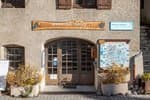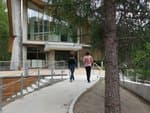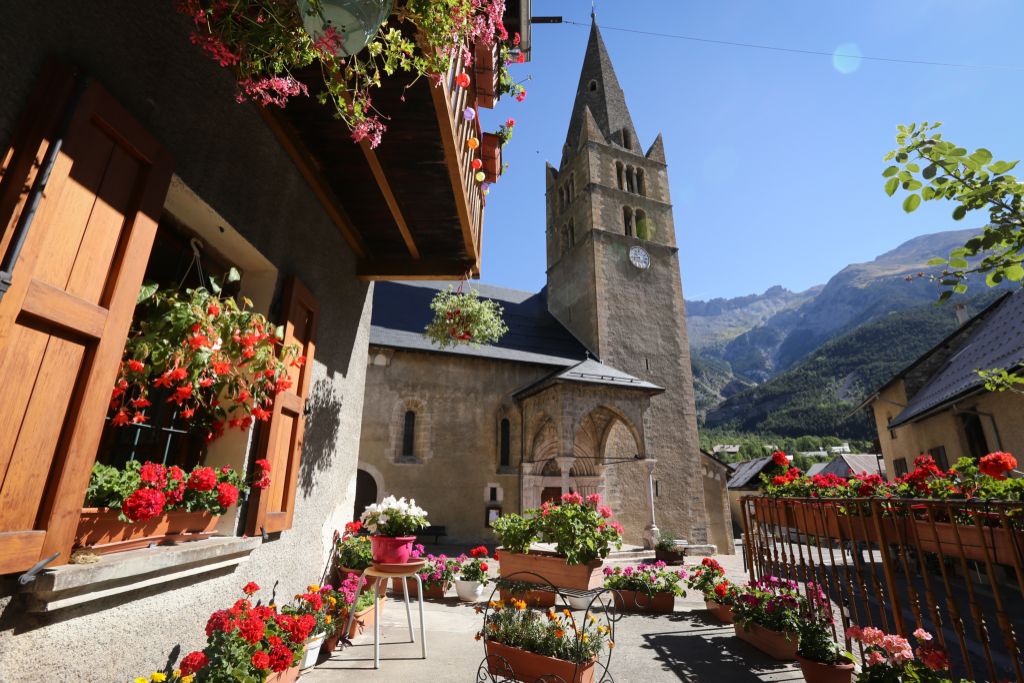
L’Onde and Le Villard
The hamlet of Le Villard, the route along the water's edge, the history of an old slate quarry... all make this circuit a perfect combination of leisure pursuit and local interest.
Description
Waysigning: one green dot and one white dot
Go past the church in Vallouise and carry on through the old village, along its main road.
- Continue along the road which rises up to a new district and joins the road to Le Villard.
- Take the track leading off to the right just after the Saint Joseph oratory. Further up, cross the Puy Aillaud road and continue straight ahead. Then drop down, following a stream to Le Villard.
- At the bottom end of the village, take the road for Vallouise and then a track on the right leading down to the Pont des Fontaines. Cross the bridge and then turn right and climb up the track along the left-hand bank of the Onde until you come to the Pont de Places.
- To go to the slate quarry ("Les Ardoisières"), carry straight on and after a short distance take the path on the left running up to the disused slate quarry. From here, retrace your steps back to the Pont des Places, and turn right onto a path leading towards Narreyroux. Further up, head towards the Pont des Fontaines and then towards the Cascade de la Pissette waterfall.
- At the foot of the waterfall, take the track on the right and then cross the bridge to follow the left-hand bank of the Onde leading back to Vallouise.
- Departure : Church in Vallouise
- Arrival : Church in Vallouise
- Towns crossed : Vallouise-Pelvoux
Altimetric profile
Recommandations
Check weather conditions before setting off.
Rescue services contact details: Secours Montagne (Mountain Rescue): +33 (0)4 92 22 22 22 or 112
Show consideration for the work of farmers, livestock keepers and owners
Close all gates behind you
Take your litter home
Do not take shortcuts across pastureland
Information desks
Place de l'Eglise, 05340 Vallouise
Vallouise Park house
, 05290 Vallouise
Information, documentation, models, exhibitions, screenings, product sales and works of the Park. Guided tours for school, reservation required. The new Park House opened in Vallouise since June 1, and offers visitors an interactive permanent exhibition inviting to explore the area and its heritage. A temporary exhibition space will allow a renewed offer. Finally, the device is completed by an audiovisual room to organize screenings and conferences Free admission. All animations of the Park are free unless otherwise stated.
Transport
Public transport >> www.pacamobilite.fr
Consider car-sharing >> www.blablacar.fr
For more information, ask at the Tourist Information Office nearest to the trail starting point.
Access and parking
10 km from L'Argentière-La Bessée, take the D994E.
Parking :
15 points of interest
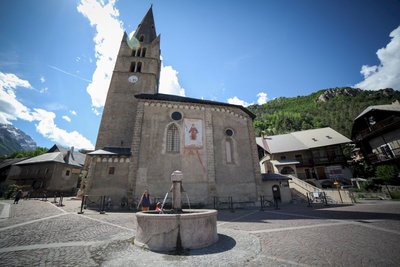
Place de l'Église - Thibaut Blais  History
HistoryThe church in Vallouise
The church of Saint-Étienne dates from the fifteenth and sixteenth centuries. Inside is an altarpiece and a tabernacle in gilded wood dating from the eighteenth century, together with come mural paintings. Not far from the church stands the late sixteenth-century Chapel of the Penitents with a nineteenth-century painted facade.
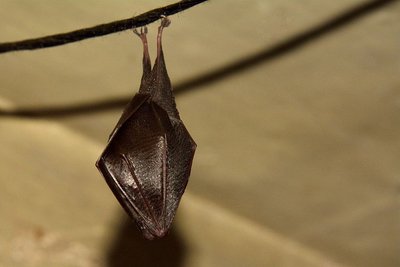
Petit rhinolophe enveloppé dans ses ailes - Mireille Coulon - Parc national des Écrins  Fauna
FaunaThe lesser horseshoe bat
In summer, bats take up residence in the church roof. The species living here is the lesser horseshoe bat, which has been in serious decline over recent decades. Every year, the mothers return after hibernating in caves and each one gives birth to one bat pup. Bats are insectivore mammals threatened by the insecticides used on farmland and on wooden structures and the loss of their hunting habitats and roosts, among other things. They are all protected.
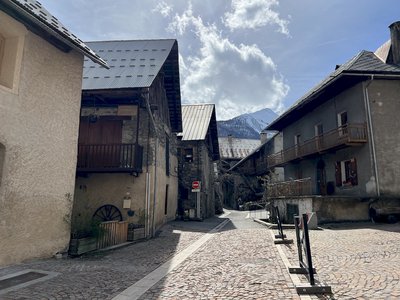
Rue de Champ de Ville - Pierre Nossereau  Architecture
ArchitectureVallouise
Multi-storey houses - typical of the architecture in the valley in the seventeenth and eighteenth centuries - stand on the old village street. The ground floor was reserved for animals, the first floor for habitation and the upper floors for grain storage. People moved from one floor to another by means of balconies interconnected by a staircase. Many of these balconies are arcaded with stone columns. This type of arcaded balcony is found throughout the valley.
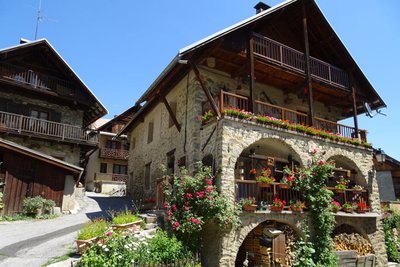
Le Villard - Office de tourisme Pays des Écrins  Architecture
ArchitectureLe Villard in Vallouise
Lying in the valley of the Onde, the hamlet of Le Villard is justifiably proud of its beautiful houses with arcaded balconies, of the same type as those of Vallouise. It is a pretty, flower-filled hamlet. It still receives a few hours of sunshine in the winter, which is not the case further along the Onde valley. It stands in a position sheltered from avalanches which are severe in this valley.
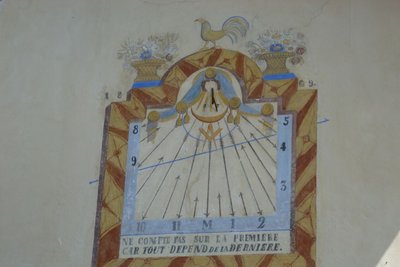
Cadran solaire sur l'église Saint Sébastien - Office de tourisme Pays des Écrins  Vernacular heritage
Vernacular heritageThe sun dials
The sun dial is an eighteenth century tradition that is widespread in the Southern Alps, where the sun is constantly present. Artisan dial makers were responsible for these dials, which adorn and embellish the fronts of houses, religious buildings and monuments. They are works of art, but can also be inscribed with philosophical sayings.

Oeuvres de Giovanni Francesco Zarbula sur l'église Saint Sébastien - Office de tourisme Pays des Écrins  History
HistoryGiovanni Francesco Zarbula
Between 1833 and 1870, Giovanni Francesco Zarbula made some forty sundials in the Hautes-Alpes. Here, one of the sundials depicts a cockerel, large vases of flowers, curtains and masonry tools. On the other sundial, we see crows dropping flowers and a rare bird. Both sundials show a motto.
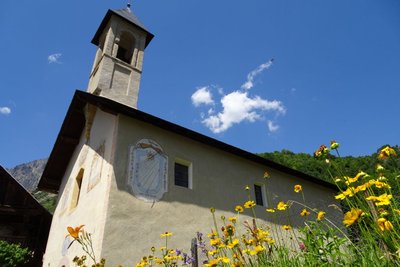
L'église Saint Sébastien - Office de tourisme Pays des Écrins  Vernacular heritage
Vernacular heritageThe church of Saint-Sébastien
A listed Historical Monument, this church has two frescoes on its facade depicting the Virgin Mary and Saint Sebastian. The church is also known for its two sun dials dating from 1718, made by Giovanni Francesco Zarbula.
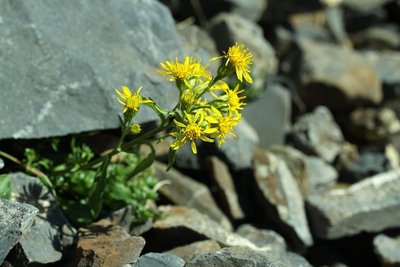
Petite verge d'or - Cédric Dentan - Parc national des Écrins  Flora
FloraThe great goldenrod
In damp spots on the edge of the track, swathes of tall plants grow. It forms great plumes of tiny yellow plants. The great goldenrod, still known as the tête d'or or "head of gold" is a plant native to North America and introduced into Europe in the eighteenth century as an ornamental. Since then, it has colonised a large are of Europe and in some places it even competes with the local flora.
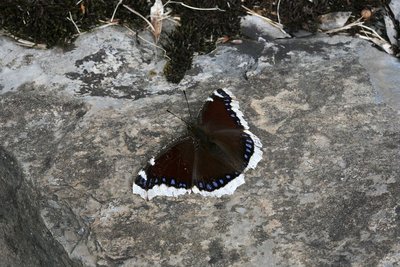
Le morio - Bernard Nicollet - Parc national des Écrins  Fauna
FaunaThe morio
With wings edged with creamy white and sporting a string of little blue dots, a large butterfly takes flight from the path as the walker approaches. This is the morio. Its common French name is manteau royal, or royal cloak (although her cloak is not edged with ermine!) It lives near willow and beech trees because it loves the sap that flows from wounds in these trees. It is one of the few butterflies to hibernate as an adult.
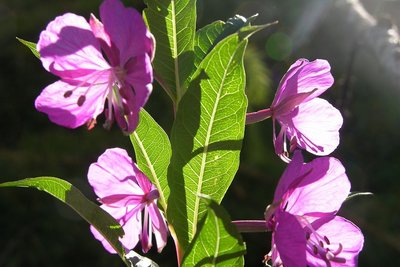
Epilobe en épis - Thierry Maillet - Parc national des Écrins  Flora
FloraThe rosebay willowherb
The rosebay willowherb is a tall, upright plant with elongated leaves. Its numerous purple-pink flowers are arranged in loose spikes at the top of the stem. It forms large clumps, which produce a beautiful display when in bloom. It is a pioneer plant and favours road embankments and disturbed ground. In late summer, its very numerous seeds, each with a little plume, float away en masse glowing in the advancing twilight…
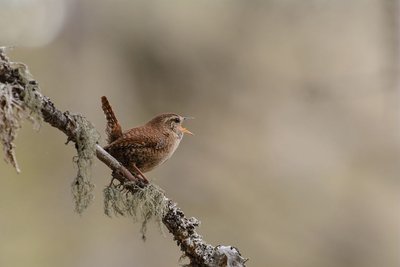
Mireille Coulon - Parc national des Écrins  Fauna
FaunaThe Eurasian wren
A piercing song, long and flowing with numerous trills, bursts from the forest. What a pair of lungs! This powerful song is that of a tiny bird with a plump body and a short tail, which is often raised: the Eurasian wren. It lives in cool forests with dense undergrowth or in bushes on the water's edge. It builds a spherical nest, often against a rock or old wall, hence its French name troglodyte.
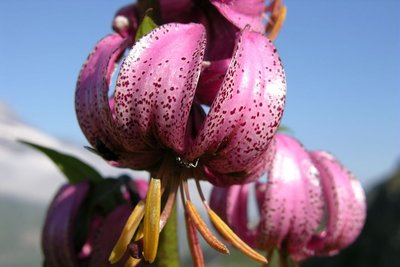
Lis martagon - Thierry Maillet - Parc national des Écrins  Flora
FloraThe martagon lily
In the forest, the martagon lily is a common sight. This superb plant has large hanging flowers with curved-back petals, which are pink speckled with purple and exposed orangey stamens. Its leaves are elongated and whorled. It grows in meadows and cool woods. Although common here, it is rare in many French regions. In fact, picking it is prohibited or regulated.
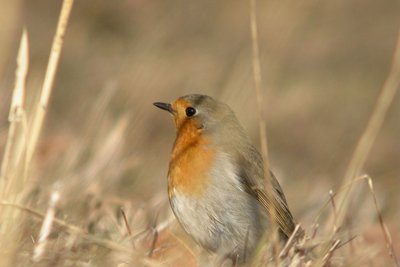
Le rougegorge - Damien Combrisson - Parc national des Écrins  Fauna
FaunaThe robin
The robin is a common sight around bird feeders in winter. But he is primarily a forest bird, building his nest close to the ground in a cavity in a rock or tree. His song is a gentle chatter, rising to high notes. The robin "redbreast" is a relatively solitary and territorial bird, and he defends his territory by displaying his red (actually, orange!) breast as he sings.
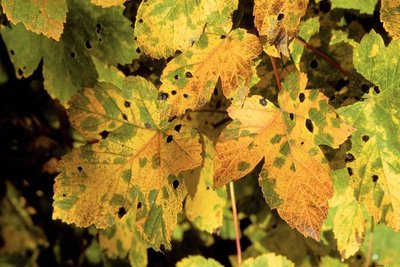
L'érable sycomore - Bernard Nicollet - Parc national des Écrins  Flora
FloraThe sycamore
The sycamore is a beautiful tree. Its leaves have five rather pointed lobes, similar to those of the plane tree. It cannot tolerate drought, so it grows in this region in relatively cool deciduous forests. Its twin fruits, equipped with wings, twist as they fal: the «helicopters» that children love. In autumn, its leaves turn golden yellow creating a delightful sight.
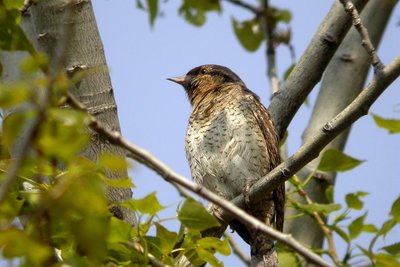
Torcol fourmilier - Damien Combrisson - Parc national des Écrins  Fauna
FaunaThe northern wryneck
The old trees in the orchard are home to the northern wryneck. It has a loud song, rather like that of the green woodpecker, only slower. This bird owes its name to the extreme way it extends and twists its neck when it feels threatened. Its French name torcol fourmilier is a reference to the fact that it feeds on ants (fourmils in French). Difficult to spot because its plumage merges into the colour of the tree trunks, it gives its presence away by its song when it returns from its migration.
Accessibility
- Accessibility level :
- Beginner
- Emergency number :
- 114
Source

Report a problem or an error
If you have found an error on this page or if you have noticed any problems during your hike, please report them to us here:

